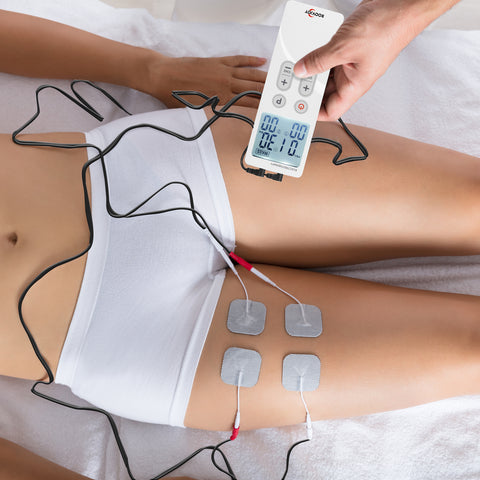
How Does a TENS Unit Work?
A TENS or transcutaneous electrical nerve stimulation machine is a popular painkilling medication alternative used by thousands of people. These battery operated, small, and portable devices are worn in the body. It comprises of a box with sticky pads or electrodes attached by wires. The machine transmits small electrical pulses to the body that helps ease certain types of pain. The best part about TENS therapy is that it is effective, easy to tolerate, and has little or no side-effects.
Gate Control Theory
The word transcutaneous refers to anything that functions through the skin. It is believed by the researchers that the small electrical pulses delivered by TENS machines are capable of affecting the process of sending pain signals to the brain, this is also known as the Gate Control Theory. The human brain receives different pain signals through nerves and the spinal cord. Therefore, fewer pain signals can reach the brain, if these signals can be blocked by the TENS machine’s electrical shocks.
It is believed that TENS machines function in two different ways.
- When the TENS machine is used on a high pulse rate, its electrical impulses interfere with pain messages and eventually blocks them. This can be attributed to pain’s gate control theory. According to this theory, the brain and spinal cord nerves have a gate mechanism. Pain messages can only get through when the gate is open, creating a feeling of pain. However, if the gate is closed, we don’t feel any pain because the pain messages are blocked. Many experts suggest that TENS machines can close the gate by stimulating certain non-pain-carrying nerves. As the non-pain messages from the TENS units are delivered faster to the brain compared to pain signals received by the body, the non-pain signals are processed faster by the brain.
- If a TENS machine is set on a low pulse rate, the unit stimulates the human body to start generating its own natural pain relieving chemicals known as endorphins. These chemicals block pain signals by functioning almost similarly as morphine.
How to Use a TENS Unit:
TENS machines are available in various types and from any different brand. Regardless of the bran and types you use, always use the machine as per the manufacturer's instructions.
Mentioned below are some general guidelines to follow.
- Make sure that the machine is switched-off before the electrode pads are placed on the skin.
- Before using it, test the machine by placing the electrode pads between your fingers.
- Before attaching the pads, ensure that skin in that area is clean and dry, and without any cuts.
- If you intend moving around, use a tape to fix the pads to the skin.
- If the pads make your skin red or cause irritation, you may need to use some other type of tape, contact gel, or pad.
Cautions to Follow:
- Electrode pads should never be placed on damaged or broken skin.
- Avoid placing the electrode pads in the mouth, close to eyes, or over the front or side of the neck.
- Never use the machine near any source of water.
- Do not use when operating machinery or driving.
CONCLUSION
A TENS or transcutaneous electrical nerve stimulation machine is a popular painkilling medication alternative used by thousands of people. It is believed by the researchers that the small electrical pulses delivered by TENS machines are capable of affecting the process of sending pain signals to the brain, this is also known as the Gate Control Theory. TENS machines are available in various types and from any different brand. Regardless of the bran and types you use, always use the machine as per the manufacturer's instructions and its precautions.
References:
https://www.nhs.uk/conditions/transcutaneous-electrical-nerve-stimulation-tens/
https://www.webmd.com/back-pain/guide/tens-for-back-pain
https://www.ijcrr.com/uploads/485_pdf.pdf
https://www.ncbi.nlm.nih.gov/pmc/articles/PMC3066716/





